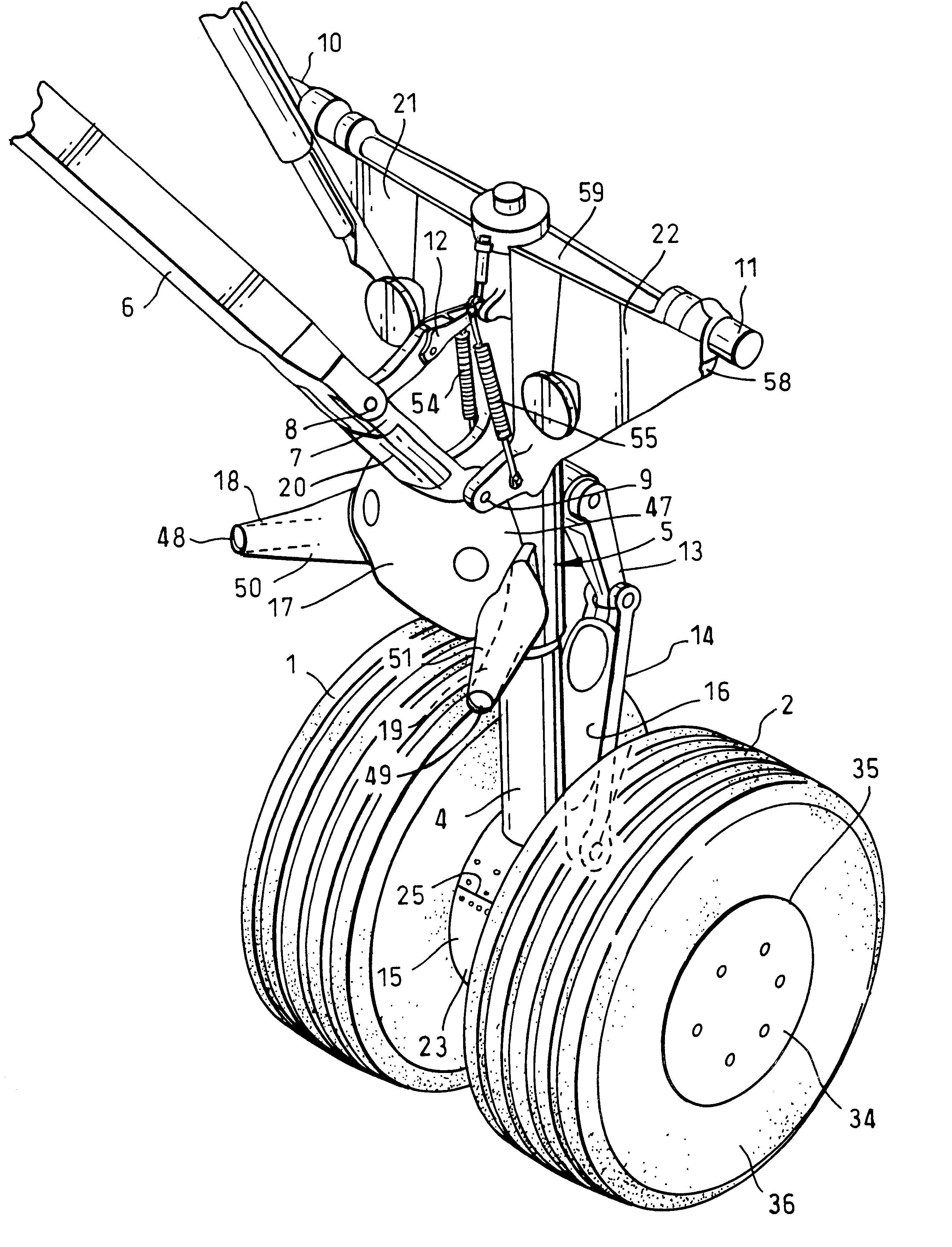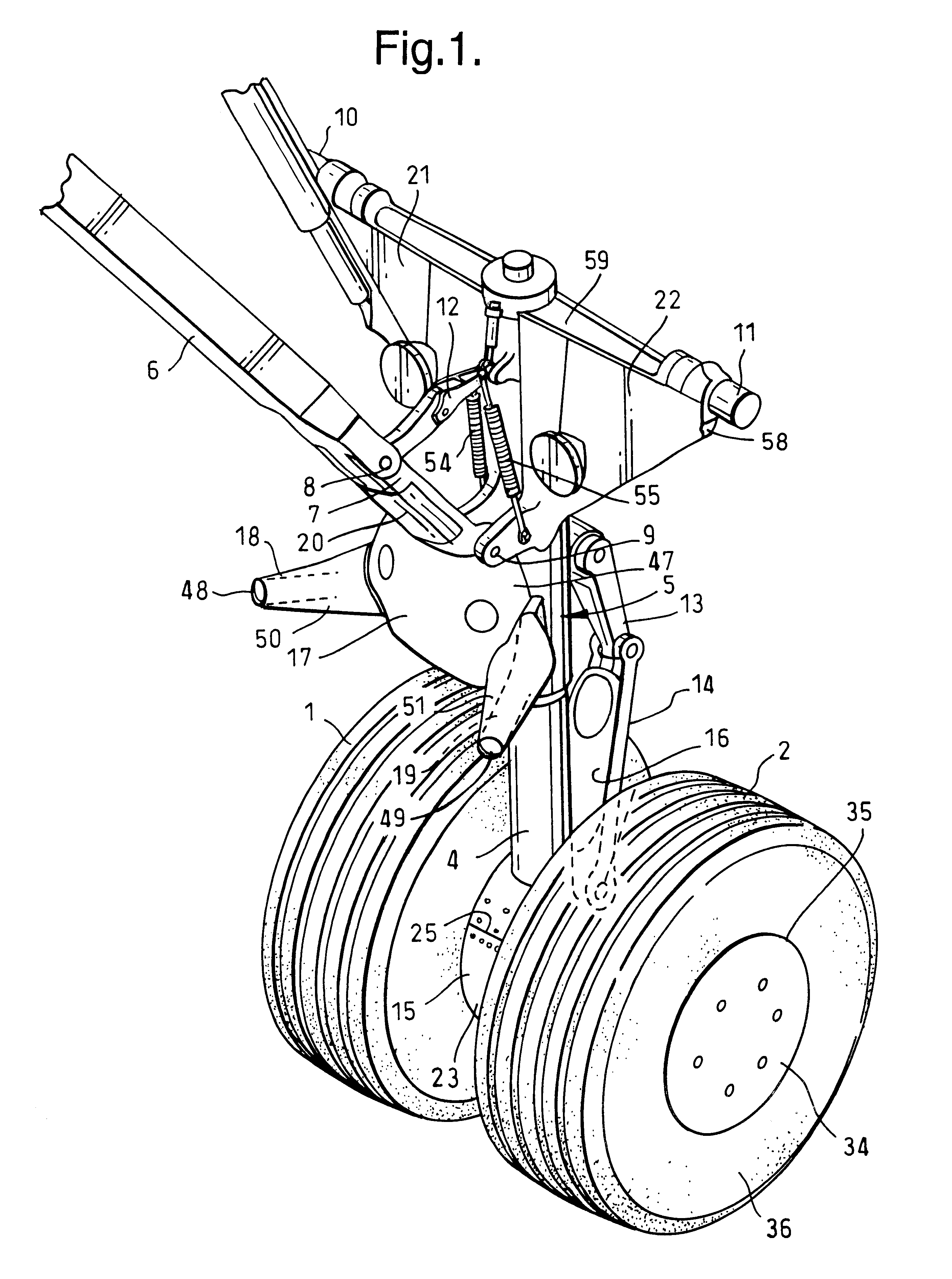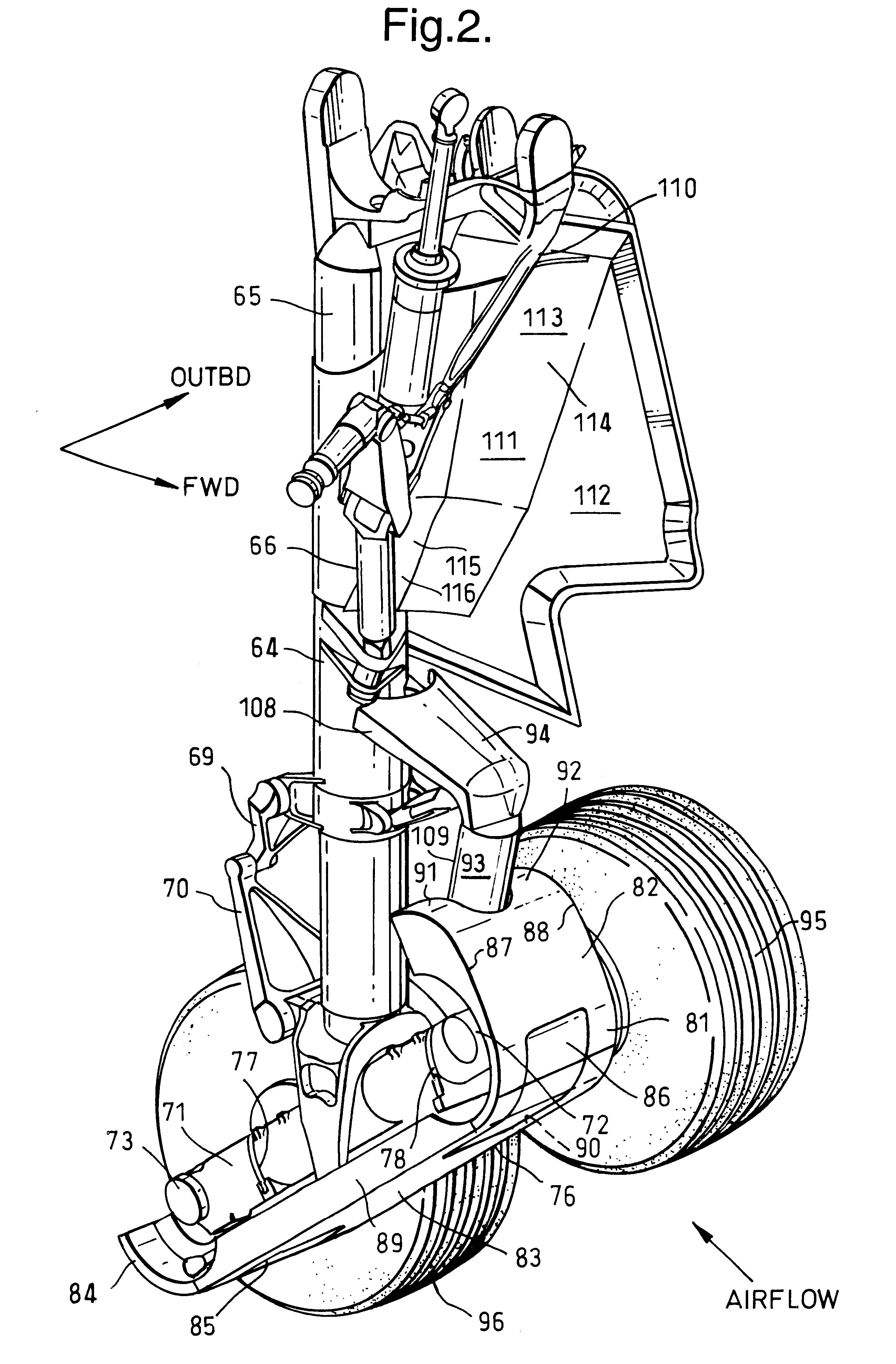Aircraft noise reduction apparatus
- Summary
- Abstract
- Description
- Claims
- Application Information
AI Technical Summary
Benefits of technology
Problems solved by technology
Method used
Image
Examples
Embodiment Construction
Referring to FIGS. 1 and 3, an aircraft nose landing gear is shown having wheels 1, 2, an axle 3 (see FIG. 3), a main telescopic leg 4, and steering mechanism shown generally at 5, an upper drag stay 6 pivotally connected to a lower drag stay 7 at pivot 8 and to the leg 4 at pivot 9, pintle bearings 10, 11, a drag stay release mechanism 12 and torque links 13, 14. The nose gear is fitted with various noise-reducing attachments as follows. All have been designed to provide the most streamlined shape commensurate with maximum total noise reduction and providing room for articulation of the landing gear during use, during retraction / deployment and during stowage. Drag may actually be increased owing to the fitting of the attachments. Shown in FIGS. 1 and 3 is an axle fairing attachment 15; a lower torque link attachment 16 (shown in FIG. 1 only); a steering mechanism attachment 17; steering actuator covers 18, 19; a lower drag stay attachment 20 and main fitting attachments 21, 22.
Refe...
PUM
 Login to View More
Login to View More Abstract
Description
Claims
Application Information
 Login to View More
Login to View More - R&D
- Intellectual Property
- Life Sciences
- Materials
- Tech Scout
- Unparalleled Data Quality
- Higher Quality Content
- 60% Fewer Hallucinations
Browse by: Latest US Patents, China's latest patents, Technical Efficacy Thesaurus, Application Domain, Technology Topic, Popular Technical Reports.
© 2025 PatSnap. All rights reserved.Legal|Privacy policy|Modern Slavery Act Transparency Statement|Sitemap|About US| Contact US: help@patsnap.com



